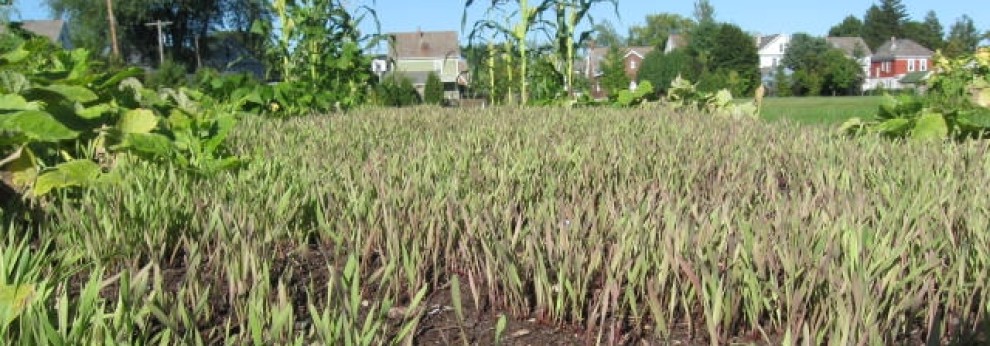 The flower in the accompanying picture is rather attractive, don’t you think? And it’s popping up here and there around our garden at Myers Middle School. Only problem with the herbaceous perennial plant, Lythrum salicaria, which occurs naturally in Europe, Asia and parts of Africa and Australia, is a minor tendency to push out native plants in North America, very much including cattails, putting pressure on biological diversity.
The flower in the accompanying picture is rather attractive, don’t you think? And it’s popping up here and there around our garden at Myers Middle School. Only problem with the herbaceous perennial plant, Lythrum salicaria, which occurs naturally in Europe, Asia and parts of Africa and Australia, is a minor tendency to push out native plants in North America, very much including cattails, putting pressure on biological diversity.
We could organize a weekend work party and yank the stuff, commonly known as Purple loosestrife, out on the grounds that, given enough time, it likely will wreak havoc. Noting the presence of this invasive species, however, could support a more productive effort than that, as we work toward creating an outdoor classroom at Myers – real hands-on study of the schoolyard’s ecology, with the possibility of stimulating interest that more passive classroom lessons sometimes fail to do.
We know of two other invasives in the vicinity of our garden, phragmite and bittersweet. And perhaps we will still find others. Simply eradicating them might be warranted. But shouldn’t we – insiders in the education business and outside volunteers alike – build teaching and learning around our discoveries? The opportunities could be substantial if it fostered real student engagement.
One more point these cheerful-looking flowers raise: Thinking through management of our garden and outdoor classroom environment is one of several areas in which we would welcome volunteer expertise. Please take a look here https://vegetableproject.org/outdoor-classroom to learn more about how you can help move our outdoor classroom vision forward.
–Bill Stoneman



